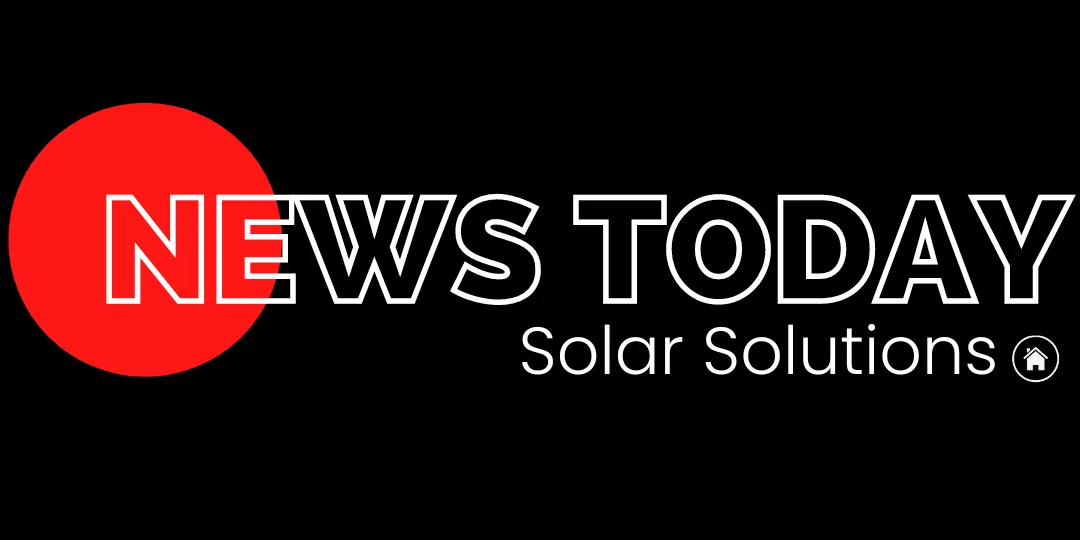Solar Industry
Latest Articles
Transparent Reporting for a Sustainable Future
Read the latest...

Electricity costs in the US are rising faster than the annual inflation rate
Navigating through the maze of our modern energy landscape, we can't help but feel the shocks of rising electricity prices. It's as if we're all plugged into one large economic grid, where every change in the current affects us—often directly hitting our wallets. In this piece, we’ll dig into why these prices are climbing, the influences of inflation, the looming shadow of climate change, and the shift toward cleaner energy sources.
Understanding Rising Electricity Prices
Current Trends in Electricity Pricing
As of the latest reports, electricity prices in the U.S. have risen significantly, with a 19% increase projected by 2028 according to an analysis by ICF (Utility Dive, 2023). This isn't just a ripple; it's a wave that will likely impact our monthly bills, creating a broader economic concern.
Historical Context: Comparing this surge in costs, it’s worth noting that annual electricity price increases had previously been more modest. Recent years have shown an upward trajectory that is starting to surpass the typical inflation rates (Utility Dive, 2023).
What’s Causing the Surge?
Rising electricity prices seem to be the new norm, but what’s driving this increase? Let’s break it down:
Inflation: Just like the prices of our morning coffee or that new gadget, electricity costs are feeling the heat from inflationary pressures. For example, the U.S. Energy Information Administration (EIA) notes that electricity prices are expected to rise, leading consumers to reassess their spending habits (EIA, 2023).
Fuel Costs: Higher costs of natural gas, coal, and oil have a direct impact on the price we pay for electricity. Recent increases in natural gas prices have pushed utility companies to pass those costs on to consumers (Utility Dive, 2023).
Infrastructure Needs: Aging energy infrastructures need updates and repairs, which costs a pretty penny. Considering that many states are looking at substantial upgrades, these investments are sure to trickle down to consumers.
Environmental Regulations: As governments strive for cleaner energy, compliance can come with costs passed down to consumers. These regulations can also accelerate the shift to renewable sources, creating temporary costs in the transition.
Inflation: The Silent Price Impact
Inflation might sound like a buzzword to some, but it’s real and tangible. It decreases the purchasing power of our money, meaning we’re getting less for each dollar we spend. When we look at electricity prices:
Rising Operational Costs: Utility companies are paying more for everything—employees, materials, maintenance—and guess what? They’re passing those costs onto you. The EIA reported that consumer demand is projected to increase, putting extra pressure on electricity prices (EIA, 2023).
Supply Chain Issues: Recent global events disrupted the supply of critical materials, making everything more expensive, including power generation.
Climate Change: An Underlying Factor
How Does Climate Change Affect Electricity Costs?
Let’s face it—we’re all aware of climate change making headlines, but how does it hit home in our electricity bills? Here’s a closer look:
Extreme Weather: When hurricanes, floods, or wildfires hit, they disrupt energy supplies and damage infrastructure. Repair costs and the need for backup energy sources can drive prices up. The investment in resilient systems is becoming a necessity rather than a luxury.
Renewable Energy Transition: Shifting to renewable sources can initially be pricey. Building wind farms or solar plants requires significant investment, which can translate to higher bills during the transition phase.
The Impact of Natural Disasters
Ever noticed how a massive storm can leave us in the dark? That’s not just inconvenient; it also adds a significant financial burden:
Increased demand for repairs.
Higher maintenance costs for utilities.
The push for more resilient energy systems.
The Push for Clean Energy
Are Clean Energy Initiatives Beneficial?
With climate change front and center, many countries are investing heavily in clean energy. But does this come at a cost? Let’s investigate:
Renewable Energy Sources: According to the EIA's forecast, we can expect electricity generation from renewables to increase sharply (EIA, 2023). This transition means a reduction in fossil fuels—beneficial for the environment—but leads to short-term spikes in electricity prices as we adjust.
Energy Efficiency Programs: Government incentives for using energy-efficient appliances can help reduce overall demand, but initial investments may raise prices temporarily.
The Future of Clean Energy
What does tomorrow hold for clean energy? Here are a few trends we’re likely to see:
Increased Investments: More funds flowing into renewable energy infrastructure, as companies and governments look to meet future energy demands without exacerbating climate change.
Technological Innovations: Emerging technologies making energy production more efficient, potentially lowering costs in the long run. Innovations in battery storage are critical to offsetting peak demand times.
Policy Changes: Governments enacting policies that support green energy can influence market dynamics, impacting electricity prices.
Strategies to Manage Rising Costs
Be Proactive: What Can We Do?
Understanding the landscape of rising electricity costs empowers us to take action. Here are some steps we can consider:
Energy Audits: Conducting an energy audit to pinpoint areas where you can save can be incredibly beneficial. Identifying energy leaks in your home can lead to significant savings.
Smart Technologies: Investing in smart thermostats and energy-efficient appliances can drastically cut energy use, ultimately lowering bills.
Renewable Options: If feasible, consider investing in solar panels or community solar programs. Taking advantage of local incentives can offset installation costs.
Key Tips for Budgeting Energy Expenses
To help us navigate those higher bills, we can adopt these budgeting tips:
Track Usage: Monitoring your electricity consumption can help you identify patterns and opportunities to save.
Time of Use Plans: Consider plans that reward off-peak usage, reducing costs during non-peak hours.
Bulk Energy Purchases: Look into programs offered by some companies to lock in rates over longer periods.
The Economic Ripple Effect
Understanding the Broader Impact
It's easy to think of rising electricity costs as a personal issue, but they also have broader implications. Let’s delve into how electricity pricing affects the economy:
Manufacturing Costs: Higher electricity prices can lead to increased production costs, which may trickle down to consumers. This could affect everything from groceries to gadgets.
Job Market: Companies may face harder decisions during economic strain and rising operational costs. Higher electricity bills might lead to layoffs or a slowdown in hiring.
Investment Decisions: Higher costs can deter investments in local areas, impacting overall economic growth. This could lead to fewer job opportunities and stifled local economies.
Concluding Thoughts on Electricity Pricing
Navigating electricity pricing in our current climate feels like a challenge, but it’s essential to remain informed. Understanding the influences of inflation, climate change, and the transition to clean energy can help us manage costs better. As we adapt to the changing energy landscape, we’ll need both resilience and innovation to ensure we keep the lights on without breaking the bank.
Electricity prices are rising due to a combination of inflation, fuel costs, climate change, and the push for cleaner energy. With anticipated increases of up to 19% by 2028, the financial landscape is changing rapidly. While these factors pose challenges, proactive measures like energy audits and efficiency upgrades can help mitigate rising expenses. Ultimately, we're all part of this evolving energy landscape, and together we can navigate these changes.
FAQs
Why are electricity prices increasing?
Electricity prices are climbing due to inflation, rising fuel costs, aging infrastructure, and the transition to cleaner energy.
How does climate change influence electricity bills?
Climate change leads to extreme weather events, which disrupt supply and increase repair costs, ultimately raising electricity prices.
What are clean energy initiatives?
Clean energy initiatives are programs that promote the use of renewable energy sources aimed at reducing dependence on fossil fuels and combating climate change.
How can I reduce my electricity costs?
You can conduct energy audits, invest in energy-efficient appliances, and monitor your energy usage to find savings opportunities.
Will rising electricity prices continue?
While it’s challenging to predict the future of electricity prices, many experts believe ongoing trends in climate change and energy transition may lead to continued fluctuations.
Showcase Your Product or Service
Sponsorship Package
Bronze Package: Basic Visibility
$1,000 / Month
One Sponsored Article: A featured post on the blog about your brand, product, or service (up to 600 words)
Display Ad on Website: A banner ad (300x250 px) placed on the homepage or specific blog pages for one month
Social Media Mention: One mention on Solar News Today’s social media platforms (Twitter, LinkedIn, Facebook)
Newsletter Inclusion: Your brand included in the monthly Solar News Today newsletter (with a link to your website)
Brand Logo on Website: Small logo inclusion in the "Sponsors" section of Solar News Today

Silver Package: Enhanced Engagement
$2,500 / Month
Two Sponsored Articles: Two blog posts (up to 800 words each) highlighting your brand, services, or industry insights
Premium Display Ad: A large banner ad (728x90 px) placed at the top of the homepage or specific blog posts
Social Media Spotlight: Three mentions (Twitter, LinkedIn, Facebook) featuring your brand or product
Newsletter Feature: A dedicated section in the monthly Solar News Today newsletter with a link to your website
Podcast Interview: A 10-minute interview or feature with your company representative on the Solar News Today podcast
Brand Logo and Link on Website: Prominent placement of your logo and link on the "Sponsors" section of Solar News Today

Gold Package: Premium Partnership
$4,000 / Month
Four Sponsored Articles: Four in-depth blog posts (up to 1,000 words each), covering your company, products, services, or thought leadership in the solar industry.
Exclusive Display Ad: A prime leaderboard banner ad (970x250 px) placed at the top of the homepage and blog pages for maximum exposure
Social Media Campaign: Six posts across Solar News Today’s social media platforms with targeted hashtags, including one video or live session showcasing your company or product
Newsletter Feature + Spotlight: A dedicated section in the monthly Solar News Today newsletter, along with a spotlight feature in a separate email blast sent to subscribers
Podcast Feature: A 20-minute in-depth interview or brand feature on the Solar News Today podcast
Brand Logo and Link on Website: Top-tier placement of your logo and a link on the "Sponsors" section of Solar News Today
Event Promotion: Co-branding on Solar News Today events or webinars (if applicable)
Exclusive Discounts: A limited-time offer or promotion highlighted in all digital content for your product/service


